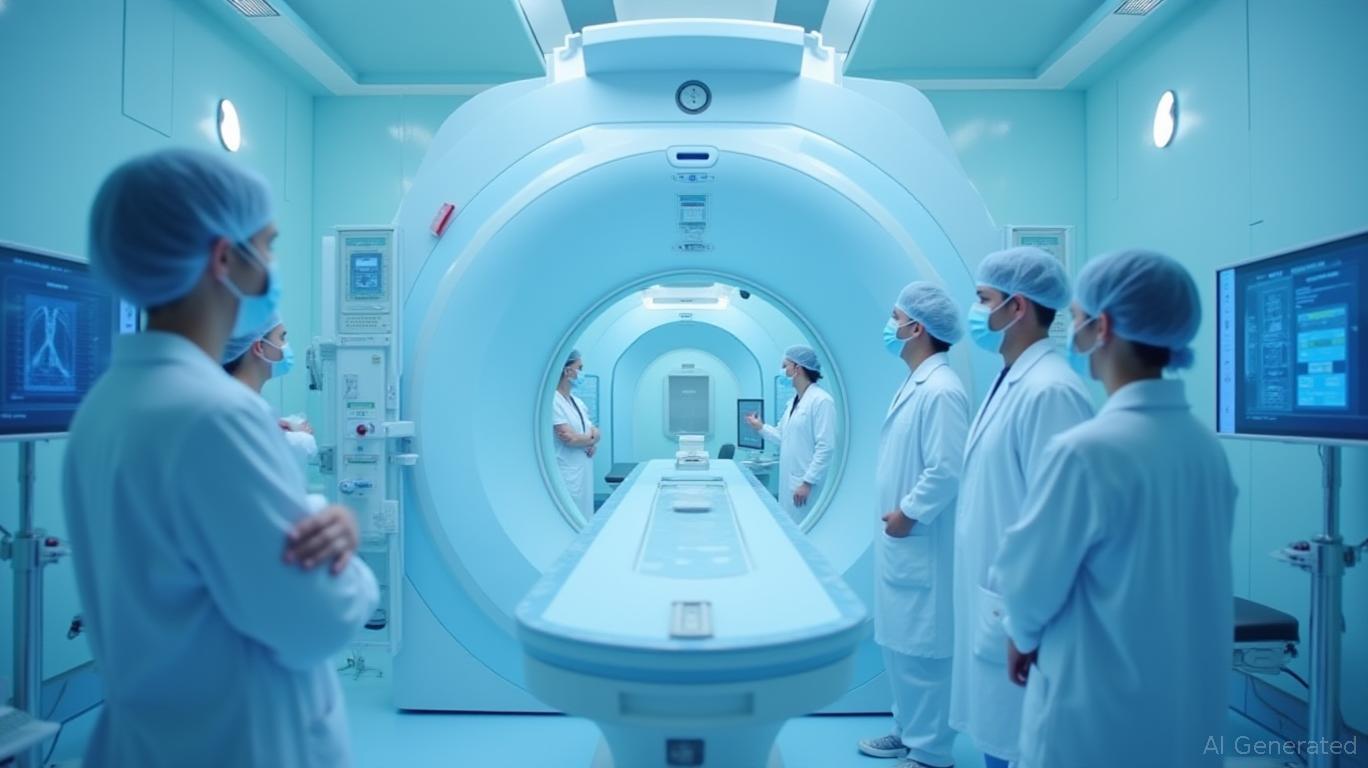IBA's QUASAR GRID³D: Precision in Imaging QA Drives Growth in Stereotactic Radiosurgery Markets
In the rapidly evolving field of precision medicine, the demand for sub-millimeter accuracy in diagnostic and therapeutic imaging has never been higher. IBA’s newly launched QUASAR® GRID³D Advantage Image Distortion Analysis System positions itself at the intersection of innovation and necessity, addressing critical gaps in quality assurance (QA) for stereotactic radiosurgery. This article explores how this system could unlock value in a $42.66 billion market by 2035, while navigating regulatory, technological, and regional dynamics.
Ask Aime: "Understanding IBA's QUASAR® GRID³D System in Stereotactic Radiosurgery"
The QUASAR GRID³D: A Technical Breakthrough
The QUASAR GRID³D is a specialized phantom-based system designed to evaluate geometric distortion in MR and CT imaging used for stereotactic radiosurgery, particularly on Leksell Gamma Knife® platforms. Its precision stems from:
- Rigid Acrylic Construction: Machined to 0.1 mm tolerance, ensuring high-resolution accuracy.
- 1,813 Signal-Producing Control Points: Enabled by 2.0 mm CuSO₄ channels in a 1 cm³ grid lattice, allowing 0.1 mm distortion mapping.
- Software Integration: Compatibility with GammaPlan® and real-time 3D visualization tools reduces manual data interpretation, streamlining workflows.
Ask Aime: What aspects of IBA's QUASAR GRID³D Advantage Image Distortion Analysis System make it a breakthrough in precision medicine and $42.66 billion market potential?

Market Potential: A $42.66 Billion Opportunity by 2035
The global stereotactic surgery devices market is projected to grow at a 4.1% CAGR, reaching $42.66 billion by 2035. Key drivers include:
1. Technological Advancements:
- AI-Driven Imaging: 78% of stakeholders prioritize AI for navigation and artifact reduction, demanding tools like the QUASAR GRID³D to validate accuracy.
- Frameless Systems: Rising adoption of frameless platforms (e.g., Gamma Knife ICON™) requires robust QA for CT and MR setups.
- Regulatory Compliance:
- Standards like AAPM TG-178 and TG-284 mandate distortion analysis, creating recurring demand for QA systems.
Post-Market Surveillance under EU MDR (2024) and FDA requirements further drive adoption.
Regional Growth:
- Asia-Pacific: China’s 5.2% CAGR and India’s 5.0% CAGR are fueled by government investments in AI-driven healthcare and expanding neurological disorder treatment.
- North America/Europe: Leading in adoption of advanced systems (e.g., CyberKnife S7), but cost barriers persist in regions like Japan (43% prefer hybrid steel-titanium systems).
Strategic Positioning and Competitive Landscape
IBA’s entry into the QA market is bolstered by its 50-year legacy in dosimetry and partnerships with leading manufacturers. Key advantages include:
- First-to-Market Innovations: The QUASAR GRID³D is the first system to address distortion analysis for Leksell Vantage frames, filling a critical gap.
- Software Differentiation: Proprietary algorithms reduce data loss, and GammaPlan® integration aligns results with clinical workflows.
- Global Reach: Over 10,000 customers in 125+ countries provide a strong distribution network.
Competitors like Elekta (Gamma Knife) and Accuray (CyberKnife) also offer QA solutions, but IBA’s focus on MRI-guided systems (e.g., QUASAR MRI⁴ᴰ) and AI compatibility sets it apart.
Risks and Challenges
- Cost Sensitivity: 74% of Asian hospitals prioritize low-cost systems (<$50,000). IBA’s pricing strategy will determine market penetration.
- Regulatory Hurdles: Japan’s delayed AI regulations and reimbursement limitations may slow adoption.
- Technological Disruption: Rapid AI advancements could require frequent updates to QA tools.
Data-Driven Insights
As of Q1 2025, IBA’s stock reflects investor optimism, with a 15% YTD gain amid product launches like the QUASAR GRID³D.
Conclusion: A Precision-Driven Investment Thesis
The QUASAR GRID³D is more than a product—it’s a strategic play to dominate the QA segment of a $42.66 billion market. With 4.1% sector growth, rising AI integration, and regulatory tailwinds, IBA is well-positioned to capitalize on recurring QA needs. Key catalysts include:
- Technological Leadership: Its 0.1 mm precision and GammaPlan® compatibility reduce treatment errors, enhancing clinical confidence.
- Regional Expansion: Asia-Pacific’s 5%+ CAGR and North America’s premium healthcare spending create dual growth engines.
- Regulatory Alignment: Compliance with AAPM and EU MDR standards ensures long-term demand.
While cost and competition pose risks, IBA’s legacy, partnerships, and focus on MRI/CT QA make it a compelling investment. For healthcare investors, this system is a bet on precision medicine’s future—one distortion-free scan at a time.
Final Note: Monitor regulatory approvals in Japan and pricing strategies in Asia-Pacific for near-term catalysts.



_e45148e31749146201654.jpeg)






